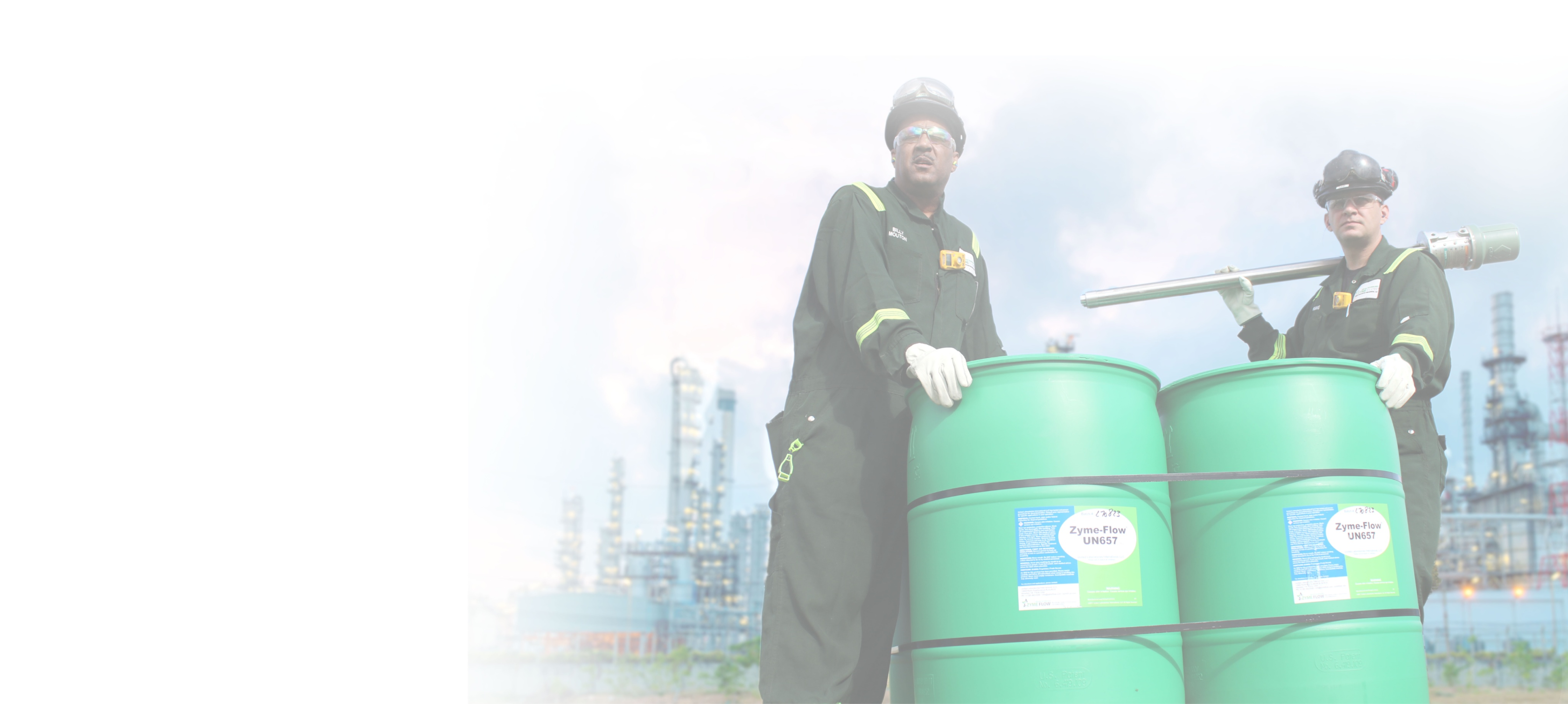Reactor Solutions
Faster Offloads. Lower Risk.
CatZyme drops into the sweep you already run — no disruptions required. Inject into hot hydrogen, monitor to targets (typically 4–6 hours), then displace with nitrogen. The result? More predictable timelines, less flaring, and lower N₂ use. Formulations are catalyst-friendly (free of surfactants and N/S/P/metals) to protect precious-metal beds.
- Shorter sweeps & purges: Typical 4–6 hr chemistry injection before N₂ purg
- Safer, cleaner turnarounds: Rapid LEL reduction for fewer personnel exposures
- Catalyst-friendly by design: Free of surfactants/N/S/P/metals
- Process-ready: Non-condensables route to FGR/flare; condensables to slop
Meet the Family
We’ve meticulously formulated two reactor decon blends to fit your catalyst and temperature requirements.
CatZyme™ RT (Original Reactor Decon)
Our legacy, broad-window formulation for plants able to run hotter sweep conditions, RT is injected into the hot H₂ stream to rapidly strip residual gases, collapse LELs, and free compacted fines—tightening purge timelines and improving offload flow. Typical bed window: 220–340 °C (425–650 °F).
- Wide operating range to match varied reactor profiles
- REACH-certified; proven across international turnarounds
- Shortens hot-H₂ and N₂ durations vs. sweep-only programs
CatZyme LT: Lower-Temp Standard
The current go-to for safer-temperature decon, CatZyme LT is engineered for sensitive, precious-metal catalysts. This formula delivers fast LEL reduction and cleaner offloads at ≥400 °F while providing added margin against exotherms. CatZyme LT is also available as LTC concentrate to reduce drums and laydown.
- Lower-temp injection manages exotherms on delicate beds
- LTC concentrate cuts drum count and staging footprint
- Built for hydrotreaters, hydrocrackers, reformers, and isomerizers
Have Questions? We Have Answers.
CatZyme® is a reactor decontamination chemistry injected into the hot hydrogen sweep to strip residual gases, drive down LELs, loosen solids, and set up safer, smoother catalyst offloads — typically in 4–6 hours before the nitrogen purge. It’s designed to protect precious-metal catalysts and fit the sweep you already run.
Both CatZyme LT and CatZyme RT are free of surfactants, nitrogen, sulfur, phosphorus, cations, and metals, so they can be injected directly into hot H₂ without compromising platinum or other precious catalysts. If you’re wondering “Will this attack my catalyst?”, the short answer is no — this formulation avoids the usual risk additives.
Inject into the hot hydrogen stream, monitor contaminants to below limits (typically 4–6 hours), then displace with nitrogen. Plants report shorter hot-H₂ sweeps and reduced N₂ usage compared to sweep-only programs.
CatZyme accelerates removal of residual gases, LELs, and H₂S, and helps dissolve compacted/solid deposits that restrict flow, improving offload conditions and reducing personnel exposure.
CatZyme LT: Built for lower-temperature injection (≥ ~400 °F) and sensitive precious-metal beds, providing added margin against exotherms while rapidly reducing LELs and freeing deposits. Also available as LTC concentrate to cut drum count and laydown.
CatZyme RT: Broad operating window (~220–340 °C / 425–650 °F) for plants able to run hotter sweeps; strips gases, collapses LELs, and frees compacted fines to tighten purge timelines and improve offload flow.
Yes. By rapidly lowering LELs and removing residual gases, CatZyme helps reduce time under hazardous atmospheres and cuts exposure during catalyst handling — supporting safer turnarounds.
CatZyme is designed to be catalyst-friendly. CatZyme LT in particular provides added margin against exotherms on delicate beds by enabling effective decon at lower injection temperatures.

Get Back to Business Sooner
Tell us your reactor type, constraints, and targets, and we’ll point you to the chemistry that protects your catalyst, accelerates decon, and trims hours from your sweep-and-purge.

